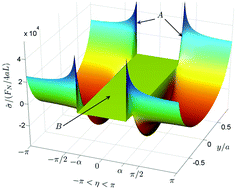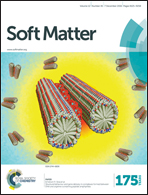Slow wave propagation in soft adhesive interfaces†
Abstract
Stick–slip in sliding of soft adhesive surfaces has long been associated with the propagation of Schallamach waves, a type of slow surface wave. Recently it was demonstrated using in situ experiments that two other kinds of slow waves—separation pulses and slip pulses—also mediate stick–slip (Viswanathan et al., Soft Matter, 2016, 12, 5265–5275). While separation pulses, like Schallamach waves, involve local interface detachment, slip pulses are moving stress fronts with no detachment. Here, we present a theoretical analysis of the propagation of these three waves in a linear elastodynamics framework. Different boundary conditions apply depending on whether or not local interface detachment occurs. It is shown that the interface dynamics accompanying slow waves is governed by a system of integral equations. Closed-form analytical expressions are obtained for the interfacial pressure, shear stress, displacements and velocities. Separation pulses and Schallamach waves emerge naturally as wave solutions of the integral equations, with oppositely oriented directions of propagation. Wave propagation is found to be stable in the stress regime where linearized elasticity is a physically valid approximation. Interestingly, the analysis reveals that slow traveling wave solutions are not possible in a Coulomb friction framework for slip pulses. The theory provides a unified picture of stick–slip dynamics and slow wave propagation in adhesive contacts, consistent with experimental observations.


 Please wait while we load your content...
Please wait while we load your content...